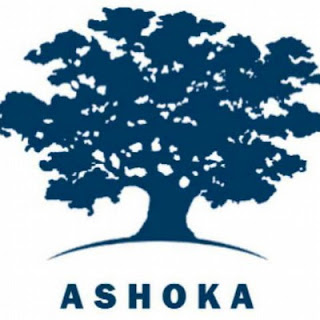A Classroom Activity about Entrepreneurship Featuring Latin American Ashoka Fellows
 by Ann Abbott
by Ann AbbottThis morning I received another issue of the Entrepreneurship Educator Newsletter. It has good content about using Twitter in your teaching and generating income by offering workshops to the public. The last point led me to brainstorm some potential workshop topics that I could offer. I'll post more about that later.
One of the things that I enjoy about the Entrepreneurship Educator Newsletter is that it often offers some grab-and-go classroom exercises that you can implement right away in your own classroom. So I thought I'd offer one of those here today. (I offered another one using Kiva.org in a previous post.)
Remember, I am teaching my students Spanish at the same time that I am teaching them about entrepreneurship. You may want to tweak the activity if you teach in English. If you teach Spanish, like I do, tell your students that they will read the information in English, but they need to speak in Spanish.
Learning Objectives:
- Recognize that local communities often have the best solutions for local problems.
- Identify elements of local solutions that make them culturally-appropriate.
Instructor Preparation Before Class:
- Go to http://www.ashoka.org/, click on "Regions of Work," click on a region, click on a country and then click on "Search for Fellows here." (I click on North America and then the countries of Mexico and Central America. Then I click on South America and click on individual countries there.)
- Click on the Fellows' names to learn about their projects. Choose one Fellow for every two students you have in your class. If you have 30 students, you need to choose 15 Fellows. (Here is an example of an Ashoka Fellow from Ecuador who has found solutions to problems with incarceration.)
- For each Fellow, on one page type "The Problem," and another page type "The Strategy." Copy the appropriate information on each page. Make sure you have a list of all the Fellows and their projects so that you can reference it in class.
In class:
- Mix all the pieces of paper. Give half the students a "Problem" and the other half a "Strategy."
- Tell the students with "The Problem" that their goal is find the student with "The Strategy" that matches their problem. They have to describe the problem or strategy in their own words, and they cannot use the name of the Ashoka Fellow to figure out the match. When they find their match, they should sit down together. (This isn't always easy. If people end up not finding their match, refer to your list to match them yourself.)
- Ask the pairs to analyze their case. Is the problem specific to the culture of that country? If not, what are examples of the same problem in other cultures? Is the solution culturally-specific? Could it be implemented in other cultures? How could you change it to make it a culturally-appropriate solution in a different context? What other strategy can you identify for the problem? How does your strategy reflect your own culture?
- Two pairs then present to each other and compare their cases and analyses.
Example:
I really like the example of Cristina Bubba Zamora from Bolivia for the following reasons:
- It presents a problem that many of our students are probably not aware of.
- It presents a solution that draws upon specific characteristics of the local indigenous community, especially their own governing body.
- It shows students the importance of the United Nations and international law, things that the US media and politicians often criticize or present as irrelevant.
- Students can make connections to similar situations in different cultures--Ancient Greek art "stolen" by Englishmen and displayed in English museums; Native American artifacts that one culture may view as "museum pieces" while the indigenous culture views them as "sacred"; the looting of museums and archaeological sites in Iraq during the US-led invasion; etc.



Comments
Post a Comment